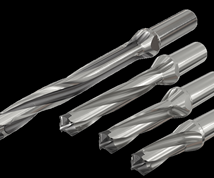VIDEO: What Does Connected Design and Manufacturing Actually Mean?
MoldMaking Technology Editorial Director Christina Fuges chats with Jamie Sciturro, Technical Solution Executive for Autodesk about connected design and manufacturing, what it means to the OEM, molder and mold builder, how it is disrupting traditional manufacturing and future advancements.
The future of making is here, bringing with it radical changes in the way things are designed, made and used. It is disrupting every industry, including manufacturing. Automotive mold manufacturers are exploring multiple options, optimizing designs and seamlessly moving from design to production. They are leveraging the latest advances in manufacturing for prototypes and production runs, and they are capturing, analyzing and managing sensor information from your products in real time.
Featured Content
I spent some time with Autodesk Technical Solution Executive Jamie Sciturro discussing a product innovation platform that brings together a set of connected design, manufacturing and IoT tools in a single data-centered platform. Here are the video interview and transcript of that conversation.
Christina Fuges: Can you define for me connected design and manufacturing?
Jamie Sciturro: Very simply put, it's when you have a fully integrated ecosystem within the product design process rather than having silos between teams.
Fuges: Can you break down what that means to the OEM, to the molder, and to a mold builder, or is it all the same?
Sciturro: It is not the same. What it means is that the supply base and all the key stakeholders involved have a clear understanding of the product. In the end, the customer benefits from this, and from a supply base they can plan accordingly. Obviously, for the OEMs, it means a better product that they can launch earlier and sell.
Fuges: Can you define how connected design and manufacturing is disrupting traditional manufacturing.
Jamie Sciturro: It's disrupting it with tools that can be implemented in a fully digitized process. For instance, applying texture to a mold flow. You are bridging two worlds, taking the creative aspect along with the manufacturing aspect. You are essentially creating a virtual digital part approval process where before you looked at physical parts to buy off.
This means a supplier will get paid earlier, and the automotive supply base will have a saleable vehicle it can launch much earlier. It also eliminates the need for prototype tooling. A huge advantage for everybody involved.
Fuges: Can you give an example of how a mold builder can design and make and use in a different way?
Sciturro: It is a virtual, collaborative tool that helps get the right people to make the right decision at the right time. Virtual reality collaborative reviews can help engines make decisions about changing a part, the tooling or a parting line placement without having anybody drive to one location.
Fuges: What advancements are coming down the pike in the future of making things?
Sciturro: I see more algorithmic design being adopted, generative design, leveraging the cloud, and not just with part design but also with tooling. Those two worlds merging together into one ecosystem.
RELATED CONTENT
-
Quick Math for Cylinder Calculations
Simple cylinder calculations provide good first look comparisons for proper sizing when moldmakers are considering the most suitable side-action option early in the mold design.
-
Benefits of Automating Employee Performance Management
How to drive high employee performance, increase employee engagement and retention, and ensure your business has the critical skills it needs to remain competitive.
-
Here Are Your Top 10 Most-Read Features of 2021
A list of the most-viewed features in MoldMaking Technology from January to November 2021.













